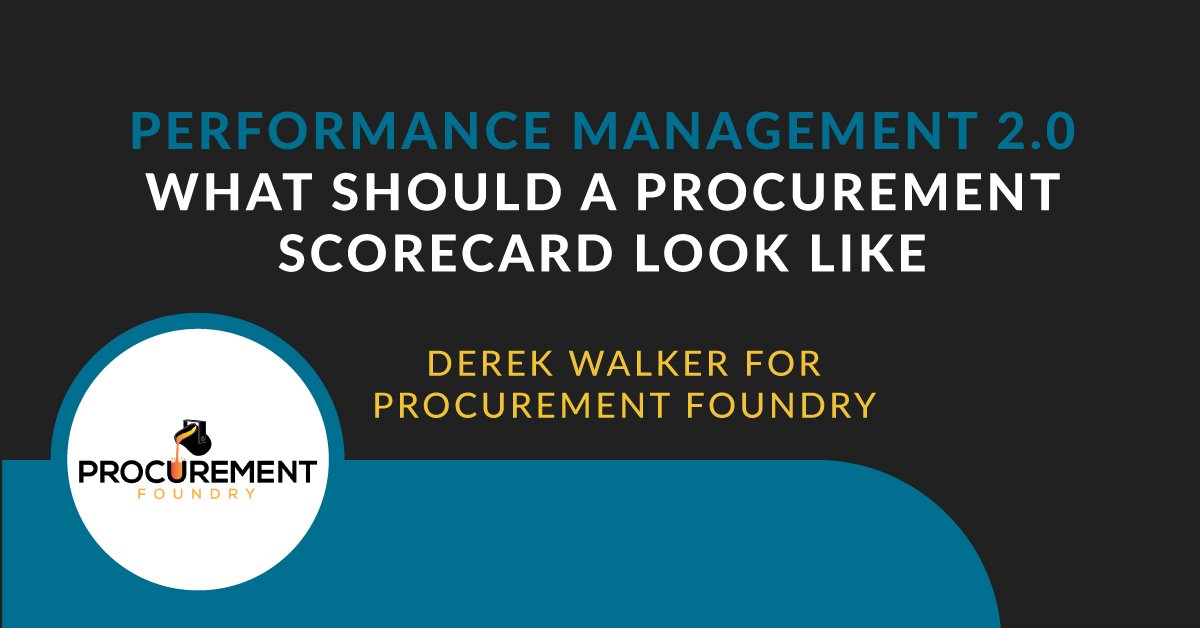Maximizing Savings Opportunities and Procurement's Strategic Value for CPOs
Saving money is not always about pinching pennies: advanced and data-driven insights enable you to identify real cost-saving opportunities, negotiate...
2 min read
![]() Derek Walker
:
2/22/22 7:40 AM
Derek Walker
:
2/22/22 7:40 AM

In the past 12 months, procurement has faced a lot of challenges. Many have stemmed from processes being outdated and solely focused on cost savings.
Currently, procurement performance management is too unidimensional, limiting reporting to singular factors, like cost savings. While an important KPI for procurement and strategic sourcing, cost savings is just one of the many things procurement manages. Cost savings alone does not reflect the whole and true value that procurement brings to the table.
Procurement needs a scorecard to measure optimal performance, that can combat the factors procurement is up against on the day-to-day. Organizations must assign weight to factors based on strategic priority. To remain competitive and bring true strategic value, procurement must stop making decisions on the fly related to cost savings.
As mentioned above, the game has changed, and procurement needs a scorecard that reflects that. According to a Spend Matters article, one different and effective approach to measuring and managing procurement performance now is to use “the Balanced Scorecard approach”—a framework of performance measurement that “adds strategic non-financial performance measures to traditional financial metrics and provides a more ‘balanced’ view of organizational performance.”
There are many factors that should be included on a procurement performance scorecard. Things like operational statistics (PO coverage, % contract spend, payment stats, cycle times), client satisfaction, supplier diversity, and ESG metrics. We will go into further detail on each below.
When working to prove value, keeping track of operational statistics is an important piece of the procurement puzzle. These would include things like internal cycle times, percentage of purchase orders and releases received on time, percentage of requests met within a certain amount of business days, etc. Did your order come on time? Did it come in full? Factors such as these must be considered. Depending on your organization’s strategic priorities, these categories might have more importance assigned to them.
Just as the name suggests, client satisfaction refers to how well you are meeting the needs and expectations of your customers. This encompasses any interactions (before, during, and after the sale). This could be measured in polls, customer reviews, whatever is most helpful to help you keep on the pulse of what is working—or not working—so you can do what it takes to keep your customers happy.
Procurement must start showing how it is contributing directly towards the achievement of key business goals related to factors other than cost. Some of these non-financial benefits could include measures taken by procurement that relate to improving customer relationships, operations, quality, supplier relationships, and cycle-time.
Supplier diversity has emerged as one of procurement’s most pressing concerns. There is pressure, particularly in North America, to include certified diverse suppliers in the supply chain. Furthermore, organizations are starting to require diversity among sub-tier suppliers as well. The benefits have been proven time and again – diverse suppliers bring greater agility, cost savings, and increased flexibility to the sourcing process. As a result, many companies are beginning to require certified diverse suppliers and prioritizing SD&I.
People have begun to focus on a company’s sustainability efforts now more than ever before. For this reason, ESG has won its place on procurement’s scorecard. Some important ESG metrics that make a difference include: carbon footprint reduction, energy efficiency improvements, established business ethics, diversity and Inclusion, and product safety, just to name a few.
To gain visibility on these many parameters, procurement needs to have integrated solutions that help automate and track traditional processes. Each organization has its own priorities, and the days of cost savings being the only KPI of strategic importance are over. Procurement must:
Are you wondering how to create your scorecard? Get a demo from Focal Point. We’ll show you how to utilize the data you already have, optimize your processes, and measure results more accurately.
Written by Derek Walker

Saving money is not always about pinching pennies: advanced and data-driven insights enable you to identify real cost-saving opportunities, negotiate...

The topic of our recent roundtable discussion with a dozen Procurement Foundry community members—exploring potential flaws in procurement incentive...

Every 30 days or so, I get the same alert on my phone—“Your electricity bill is available for viewing.” I take a quick look, make sure nothing seems...